








MIDWEEK UPDATE 20 DECEMBER 2017Plan Your Weekend……..Forthcoming Events…….Aviation News Worldwide Incidents and Accidents……This Week in Aviation History  4 to 24: Adamsfontein Badge Fly in. Low cost tugging available for any glider pilot who wants to pop in on their way to the Cape. For more info go to www.pjaviation.co.za or phone 083 265 0581 3rd Saturday of every month. Microland. Bring and braai. Fires and bykos provided. Fires start from 09h30. Contact person: Nick Swardt 082 441 8011 or Alan Hussey 072 82 2341     7: SAAF Museum AFB Zwartkop open practise day. Officer Commanding - Museum oc@saafmuseum.org.za 012 351 2290 20-21: Sport Aerobatics Gauteng Regionals. Vereeniging Contact Annie Boon E-mail: chunge@mweb.co.za 20: Kittyhawk Air Navigation Race (ANR) Kitty Hawk Aerodrome, 369jr, Boschkop Road, Pretoria East, 0036, South Africa (map). Contact Rob Jonkers e-mail: rob@aerosud.co.za Cell:082 804 7032 3rd Saturday of every month. Microland. Bring and braai. Fires and bykos provided. Fires start from 09h30. Contact person: Nick Swardt 082 441 8011 or Alan Hussey 072 82 2341   8: EAA Chapter 322 meeting. Dicky Fritz Moth Hall Edenvale. Contact: editor@afskies.co.za 10: Rand Airport Challenge. Contact Frank Eckard e-mail: frank.eckard@mweb.co.za cell: 083 269 1516 10: SAPFA AGM - Rand Airport Saturday. 15-17: SAPFA Committee Bosberaad - Paddafontein. 3rd Saturday of every month. Microland. Bring and braai. Fires and bykos provided. Fires start from 09h30. Contact person: Nick Swardt 082 441 8011 or Alan Hussey 072 82 2341 21 to25: Armed Forces Day Kimberley.   3: SAAF Museum AFB Zwartkop open practise day. Officer Commanding - Museum oc@saafmuseum.org.za 012 351 2290 3: Durban Wings Club Fun Rally. Virginia Airport, Airport Street, Durban North, 4051, South Africa (map). Contact: Mary de Klerk maryd@expandingbranding.co.za 8: EAA Chapter 322 meeting. Dicky Fritz Moth Hall Edenvale. Contact: editor@afskies.co.za 9 to 11:Aero Club of South Africa air week at Middleburg airfield. Contact Alan Evan-Hanes E-mail: alan@aeroclub.co.za 3rd Saturday of every month. Microland. Bring and braai. Fires and bykos provided. Fires start from 09h30. Contact person: Nick Swardt 082 441 8011 or Alan Hussey 072 82 2341 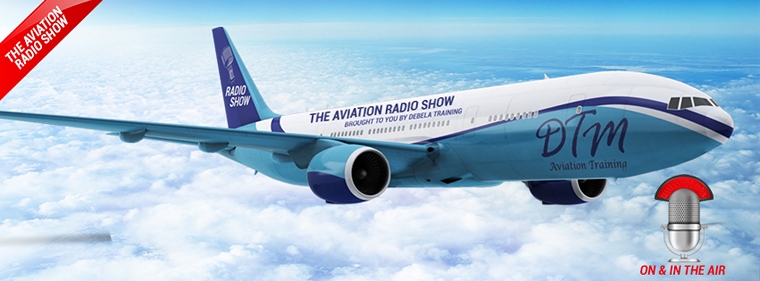 The Aviation Radio Show; get all your questions answered in one place. To listen to a recording of the live broadcast click on the link: www.debela.co.za/aviation-radio-show  BLOODHOUND TARGETS 500MPH IN SOUTH AFRICA IN 2018  Photo © Tom McCarthy Photography.jpg The BLOODHOUND Project announced plans to run BLOODHOUND SSC for the first time on its dry lake bed race track at Hakskeen Pan, Northern Cape, South Africa, in October 2018. Following successful 200mph (320kmh) UK runway trials at Cornwall Airport Newquay in October 2017, the team will be targeting 500mph - a key milestone on the journey to setting a new World Land Speed Record.  Data on the interaction between the solid aluminium wheels, which will be used for the first time, coupled with 'base drag' measurements, will provide 'real world' insight into the power required to set records. Base drag relates to the aerodynamic force produced by low pressure at the rear of the Car, sucking it back. As the Car approaches transonic speeds, this force far exceeds the friction of the air passing over BLOODHOUND's bodywork. Hundreds of gigabits of information will be gathered by over 500 sensors built into the Car. This won't just be used by the BLOODHOUND team, it will be shared with schools around the world, thanks to Cloud Computing partner Oracle. Students will be invited to analyse the data and 'mark' the engineers' homework in real time, as part of the world's biggest STEM education programme. The BLOODHOUND 500 tests will be conducted using the Car's Rolls-Royce EJ200 jet engine, normally found in a Eurofighter Typhoon, which produces a peak thrust of 20,000 lbs (90 kilonewtons), equivalent to 54,000 thrust hp, or the combined output of 360 family cars. The Car will run for the first time with its solid aluminium wheels, specially designed for the desert surface. Measuring 900mm in diameter and weighing 95kgs each, they are designed to spin at up to 10,200rpm (revolutions per minute) - more than four times faster than wheels on an F1 car at top speed. The result of 30 years of research and design, they were created by an international consortium and forged from one of the highest aircraft grade aluminium alloys in the world: 7037. The wheels have a V shaped keel which digs into the alkali playa (baked mud) surface by 25mm when the Car is stationary. As speeds increase, the wheels will rise up out of the mud surface and plane in much the same way as a speedboat rides up on the surface of the water. At 500mph (804kmh) and above, just a few millimetres of metal will be in contact with the desert surface, and the giant aluminium discs will act more like rudders than the wheels on a conventional car. The 12 mile (19km) desert racetrack has been prepared by 317 members of the local Mier community. They have moved 16,000 tonnes of rock from 22 million square metres of dry lakebed, the largest area of land ever cleared by hand for a motorsport event, testimony to the partnership forged between the BLOODHOUND Team, the local community and the Northern Cape Government. Engineering Director Mark Chapman said: "The track is 19km by 500m, with large safety areas on both sides. This allows us to lay out up to 50 individual tracks side by side. This is important as we can't run over the same piece of ground twice because the Car will break up the baked mud surface as it passes. We need multiple tracks so we can build speed slowly and safely - going up in 50mph (80km/h) steps, comparing real-world results with theoretical data - and Hakskeen is the perfect place to do this. Andy Green said, "BLOODHOUND 500 is a key milestone on the route to setting a 1,000mph record. Building on everything we learned in Newquay this October, we'll learn a tremendous amount by going fast on the desert the Car was designed to run on. We hope you can join us in the Kalahari desert to share this experience first-hand." FLYDUBAI TOUCHES DOWN AT KILIMANJARO INTERNATIONAL AIRPORT 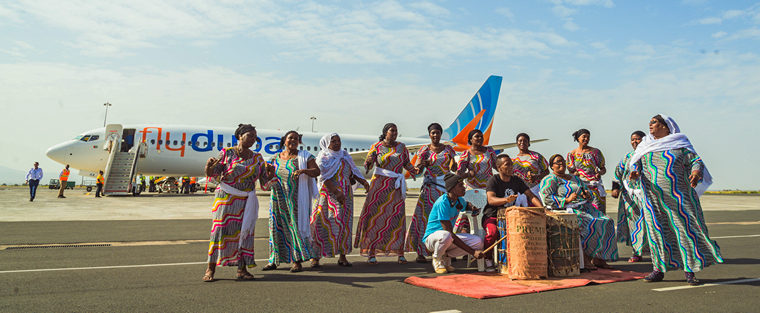 Photo © AOPA ?Dubai-based flydubai's inaugural flight touched down today at Kilimanjaro International Airport (JRO) (https://www.flydubai.com), increasing capacity to Tanzania and further expanding its network in Africa to twelve destinations. flydubai will offer six flights a week to Kilimanjaro, three of which are via a stop in the capital, Dar es Salaam and will increase the total number of flights to Tanzania to 14 flights a week. The aircraft touched down at 07:45 (Kilimanjaro local time) and on board the flight was a delegation led by Sudhir Sreedharan, Senior Vice President, Commercial Operations (GCC, Subcontinent and Africa) for flydubai. The delegation was met on arrival by Hon Prof Makame Mbarawa MB, Minister for Works, Transport and Communication, Mr Gregory George Teu, Chairman of the Board of Kilimanjaro Airports Development Company (KADCO), the Board of Directors of the KADCO, the Regional Commissioners for Kilimanjaro and Arusha, representatives of the District Commissioners, Members of Parliament, Tanzania Tourist Board, together with representatives of the local tourism industry. As part of the inaugural programme, flydubai showcased its new Boeing 737 MAX 8 aircraft which it unveiled for the first time at the Dubai Airshow in November 2017.  Kilimanjaro International Airport is located between the regions of Kilimanjaro and Arusha in Northern Tanzania. The airport is the major gateway to the Kilimanjaro region, a main international tourism destination that includes Mount Kilimanjaro, Arusha National Park, Ngorongoro Crater and Serengeti National Park. Only a few international carriers operate to Kilimanjaro and flydubai will be the first airline to provide direct air links from the UAE. Emirates will codeshare on this route and as part of the Emirates flydubai partnership, passengers will have greater choice for onward travel from Dubai to hundreds of destinations across the world. flydubai operates flights to twelve destinations in Africa, including Addis Ababa, Alexandria, Asmara, Djibouti, Entebbe, Hargeisa, Juba, Khartoum and Port Sudan, as well as Dar es Salaam, Kilimanjaro and Zanzibar. 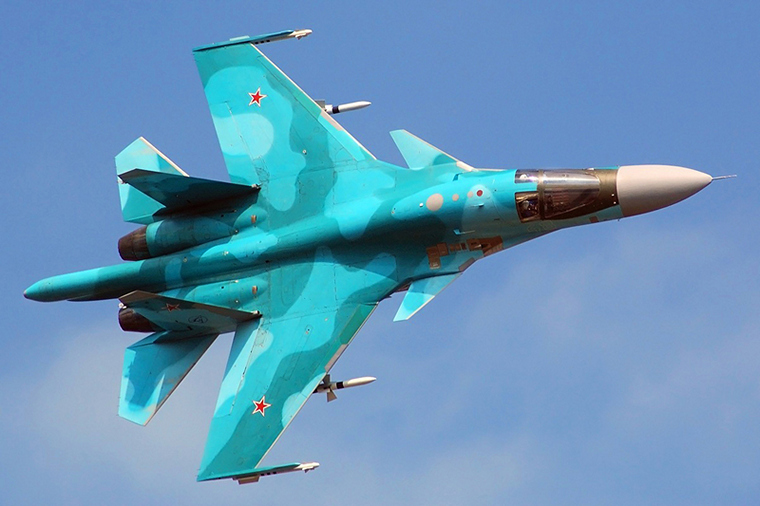 Photo © Sukhoi At the present time the aircraft plant operates with maximum efficiency. The State Contract with the Ministry of Defence of the Russian Federation for supplies of the Su-34s to the Russian Air and Space Forces up to the year 2020 guarantees a stable work load of the plant for the coming years and identifies its long-term development prospects. Currently, Su-34s operate successfully in the military and demonstrate high performance. BOEING T-X: DESIGNED WITH MAINTAINERS IN MIND  Photo © Boeing 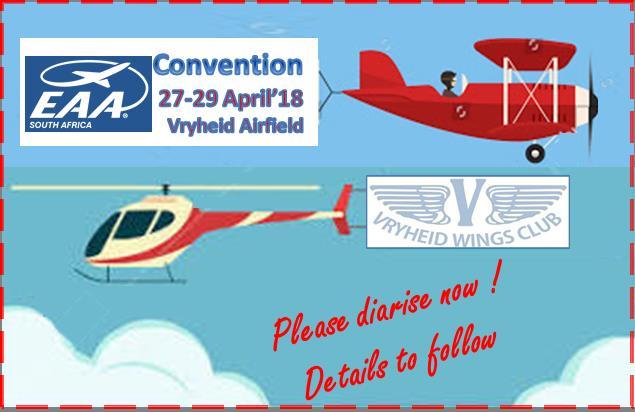 The system's smart design features high wings, easy access panels and easy reach, fewer and more common fasteners, and easy access to critical items like the engine and seats. It's also designed around common U.S. Air Force ground equipment and uses established suppliers to reduce supply chain complexity. "Among other features, the side opening canopy gives you easy access for ejection seat changes, which only take maybe a couple hours in and out," said Boeing airplane mechanic Joe Simmons. Adding, "And, a crew of four people can have the engine changed before lunch." Boeing Test Pilot Matt Giese said: "Boeing went the extra effort to make sure that this aircraft was designed for maintainers in addition to pilots and instructors." The Boeing T-X aircraft has one engine, twin tails, stadium seating and an advanced cockpit with embedded training. It's the cornerstone of the complete advanced pilot training system, which includes state-of-the-art ground-based training and a maintenance friendly design for long-term supportability. Photo © ATR From December 11 to 14, an ATR 72-600 in the colours of Air Sénégal will embark on a demonstration tour in three West African countries. The best-selling regional aircraft in the below-90-seats category will touch down in Bamako (Mali), Accra (Ghana) and Ouagadougou (Burkina Faso) to complete the first flight demonstration of an ATR -600 series aircraft in West Africa. 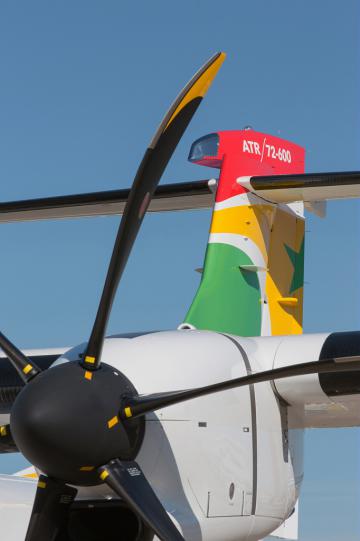 Christian Scherer, ATR's Chief Executive Officer, commented on this demo tour: "With its energy efficiency and its low maintenance and operating costs, the ATR 72-600 perfectly aligns with the needs of airlines operating short-haul flights in Africa. It is a reliable, comfortable aircraft, with cutting-edge navigation technologies, recognised as the most suitable tool to open up new markets. The proof is that ATRs create about a hundred new routes every year around the world. " Over the next 20 years, 400 new air routes are expected to be opened in Africa and the Middle East and 300 turboprops should be needed to cover fleet growth, the creation of new routes and the replacement of existing fleets. Moreover, ATR is the only manufacturer to offer an aircraft capable of covering both the 50- and 70-seat segments, therefore making it possible to adapt the aircraft's capacity to market demand. EIGHT MORE AW139S TO STRENGTHEN RESCUE AND BORDER PATROL SERVICES IN ITALY Photo © Leonardo  The Italian Coast Guard has signed a contract for two AW139s to perform search and rescue missions, with deliveries to be completed by the end of 2018, while the Italian Customs and Border Protection Service (Guardia di Finanza) has ordered six to perform patrol operations, with deliveries to be completed by 2020. With these aircraft deliveries both operators will have a fleet of 14 AW139s each, allowing a further enhancement in mission capability and simplified logistics as they replace ageing AB412 aircraft. The Italian Coast Guard recently passed the 10,000 flight hours milestone with its AW139 fleet, having saved many lives in operation and providing evidence of the outstanding effectiveness, reliability of the aircraft and successful partnership with Leonardo. Italian Customs and Border Protection Service has been using its AW139s for a range of roles across the nation including mountain and maritime patrol and reconnaissance, law enforcement, SAR and homeland security. LOCKHEED MARTIN LONG RANGE ANTI-SHIP MISSILES 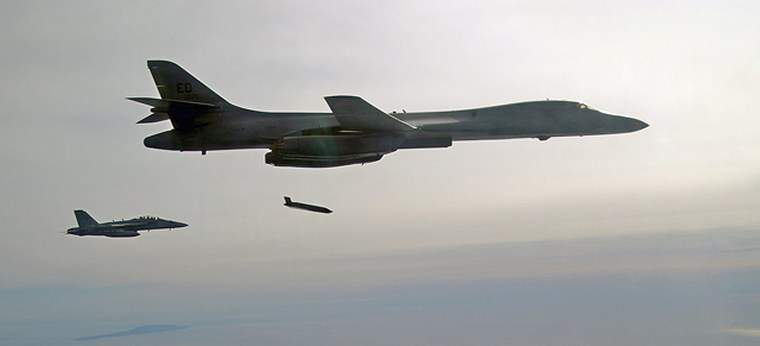 Photo © Lockheed Martin "This continued success with LRASM provides confidence in its upcoming early operational capability milestone, putting a proven, unmatched munition into the U.S. Navy and U.S. Air Force inventories," said David Helsel, LRASM program director at Lockheed Martin Missiles and Fire Control. "The successful flight demonstrates LRASM's continued ability to strengthen sea control for our forces." LRASM is designed to detect and destroy specific targets within groups of ships by employing advanced technologies that reduce dependence on intelligence, surveillance and reconnaissance platforms, network links and GPS navigation in electronic warfare environments. LRASM will play a significant role in ensuring military access to operate in open ocean/blue waters, owing that to its enhanced ability to discriminate and conduct tactical engagements from extended ranges. LRASM is a precision-guided, anti-ship standoff missile based on the successful Joint Air-to-Surface Standoff Missile - Extended Range (JASSM-ER). It is designed to meet the needs of U.S. Navy and Air Force warfighters in contested environments. The air-launched variant provides an early operational capability for the U.S. Navy's offensive anti-surface warfare Increment I requirement to be integrated onboard the U.S. Air Force's B-1B in 2018 and on the U.S. Navy's F/A-18E/F in 2019.  Netherlands, Amsterdam: A KLM Boeing 787-900, on a flight from Amsterdam (Netherlands) to Chengdu (China), was in the initial climb out of Amsterdam's runway 36L when the crew declared PAN PAN PAN, PAN PAN PAN reporting an engine failure right after take-off. The aircraft levelled off at FL060, the crew reported they had lost thrust on their left hand engine, they wanted to dump fuel. The crew subsequently reported the engine had stalled, it was still running at idle thrust. The aircraft climbed to FL070, was vectored over the North Sea, dumped fuel and returned to Amsterdam for a safe landing on runway 27 about 35 minutes after departure. Germany, Sieberatsreute: A Cessna 510 Citation Mustang operated by Skytaxi Luftfahrt with three onboard enroute from Egelsbach Airport to Friedrichshafen Airport impacted wooded terrain at Sieberatsreute in Germany, killing three occupants. The aircraft was approaching Friedrich Friedrichshafen Airport and came down about 16 km north-east of the airport. 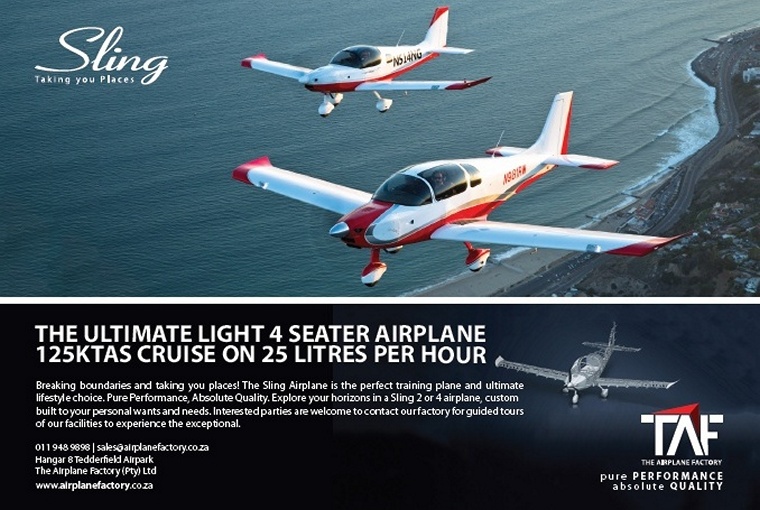  22 DECEMBER 1964 First flight of the Lockheed SR-71 Blackbird Lockheed's previous reconnaissance aircraft was the relatively slow U-2, designed for the Central Intelligence Agency (CIA). In late 1957, the CIA approached the defence contractor Lockheed to build an undetectable spy plane. The project, named Archangel, was led by Kelly Johnson, head of Lockheed's Skunk Works unit in Burbank, California. 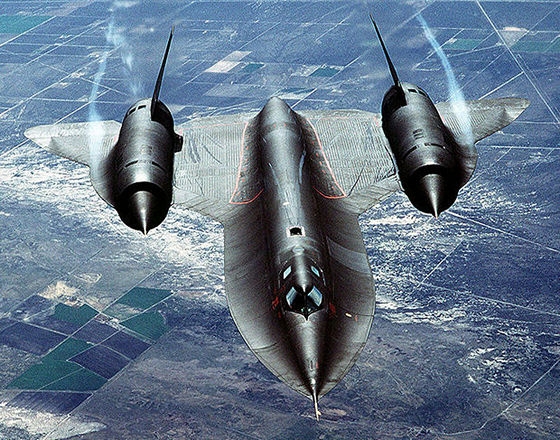 The first flight of an SR-71 took place on 22 December 1964, at Air Force Plant 42 in Palmdale, California. The first SR-71 to enter service was delivered to the 4200th (later, 9th) Strategic Reconnaissance Wing at Beale Air Force Base, California, in January 1966. On 21 March 1968, Major (later General) Jerome F. O'Malley and Major Edward D. Payne flew the first operational SR-71 sortie in SR-71 serial number 61-7976 from Kadena AFB, Okinawa. During its career, this aircraft (976) accumulated 2,981 flying hours and flew 942 total sorties (more than any other SR-71), including 257 operational missions, from Beale AFB. The SR-71 reached a top speed of Mach 3.4 during flight testing with pilot Major Brian Shul reporting a speed of Mach 3.5 on an operational sortie while evading a missile over Libya. The SR-71 served with the U.S. Air Force from 1964 to 1998. A total of 32 aircraft were built; 12 were lost in accidents and none lost to enemy action |
                  |
 |
 |

Copyright © Pilot's Post PTY Ltd
The information, views and opinions by the authors contributing to Pilot's Post are not necessarily those of the editor or other writers at Pilot's Post.